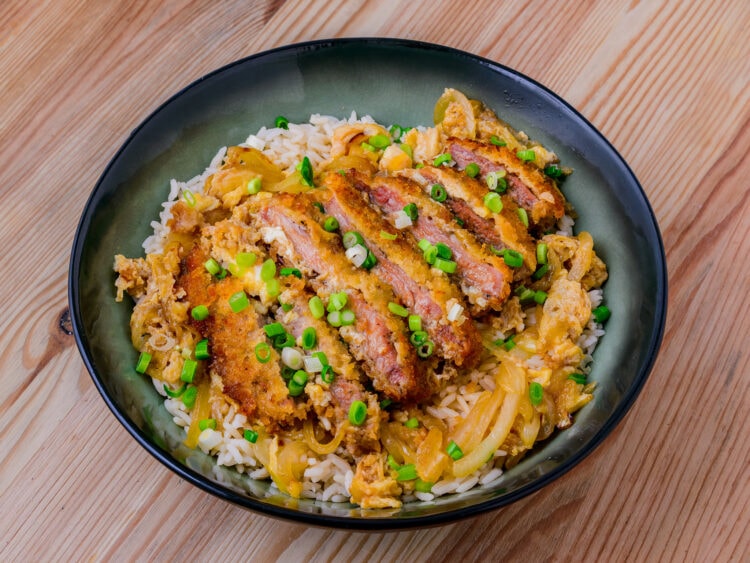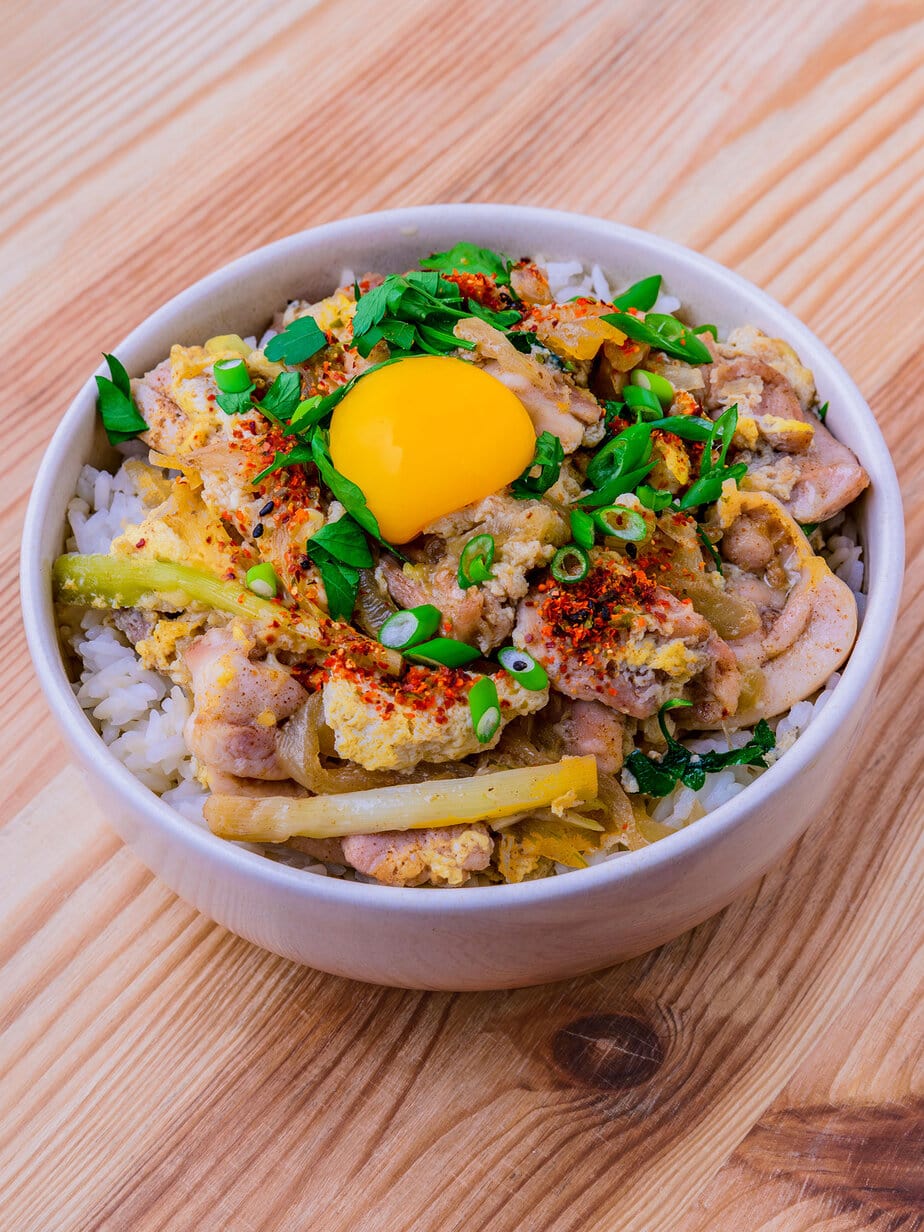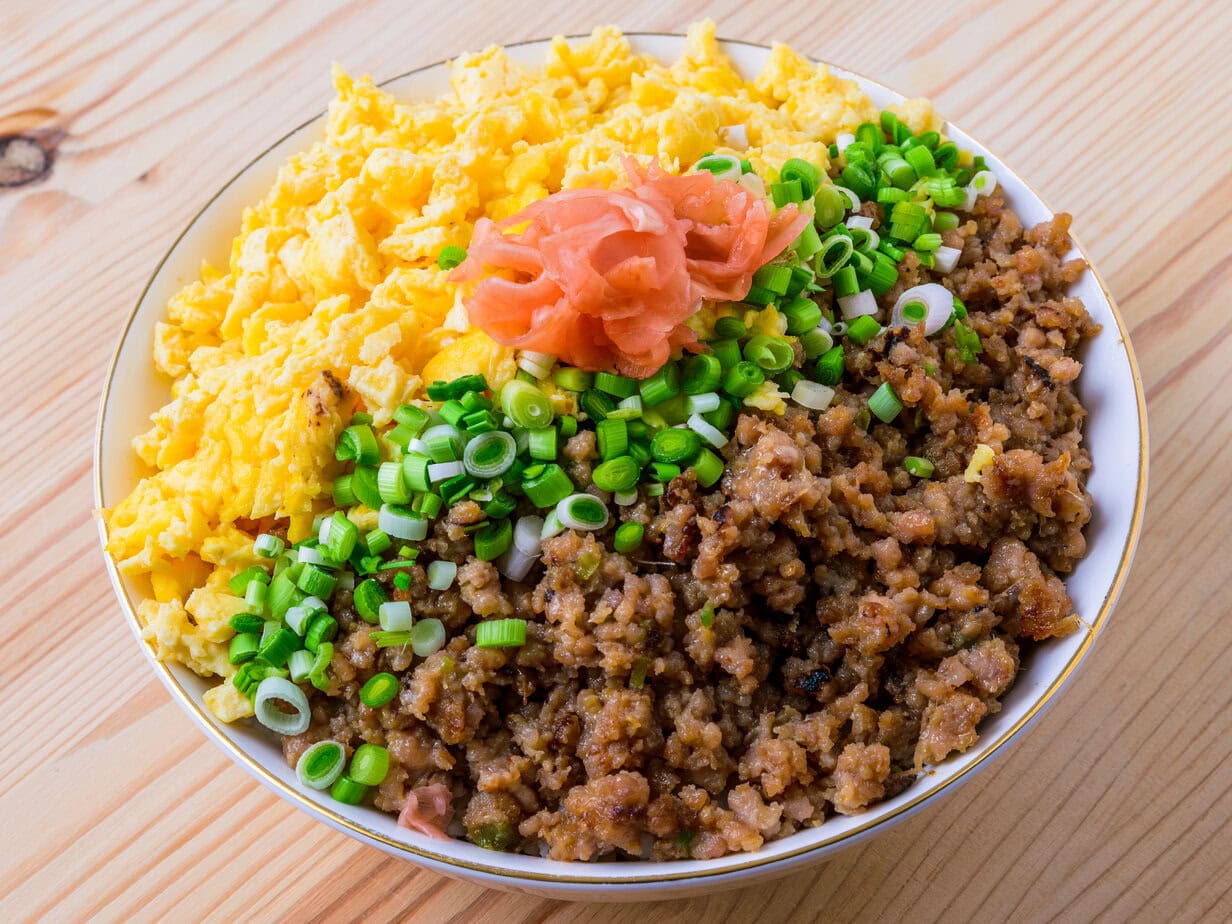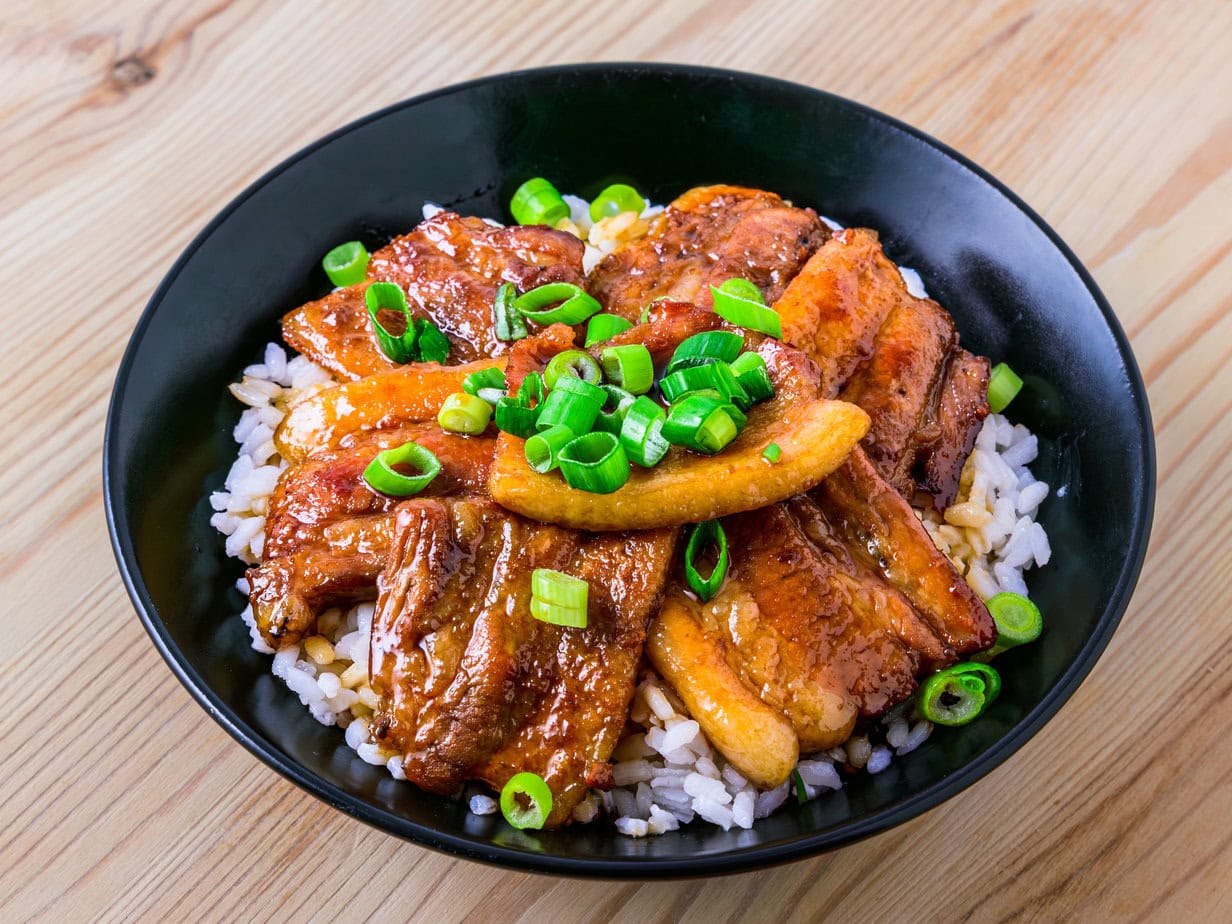Gyudon, katsudon, kaisendon… Have you noticed the little syllable “don” that makes up the richness and variety of “donburi” dishes? There is indeed an incredible array of donburi recipes in Japan, where it is considered a staple of Japanese cuisine. But what exactly does donburi refer to?
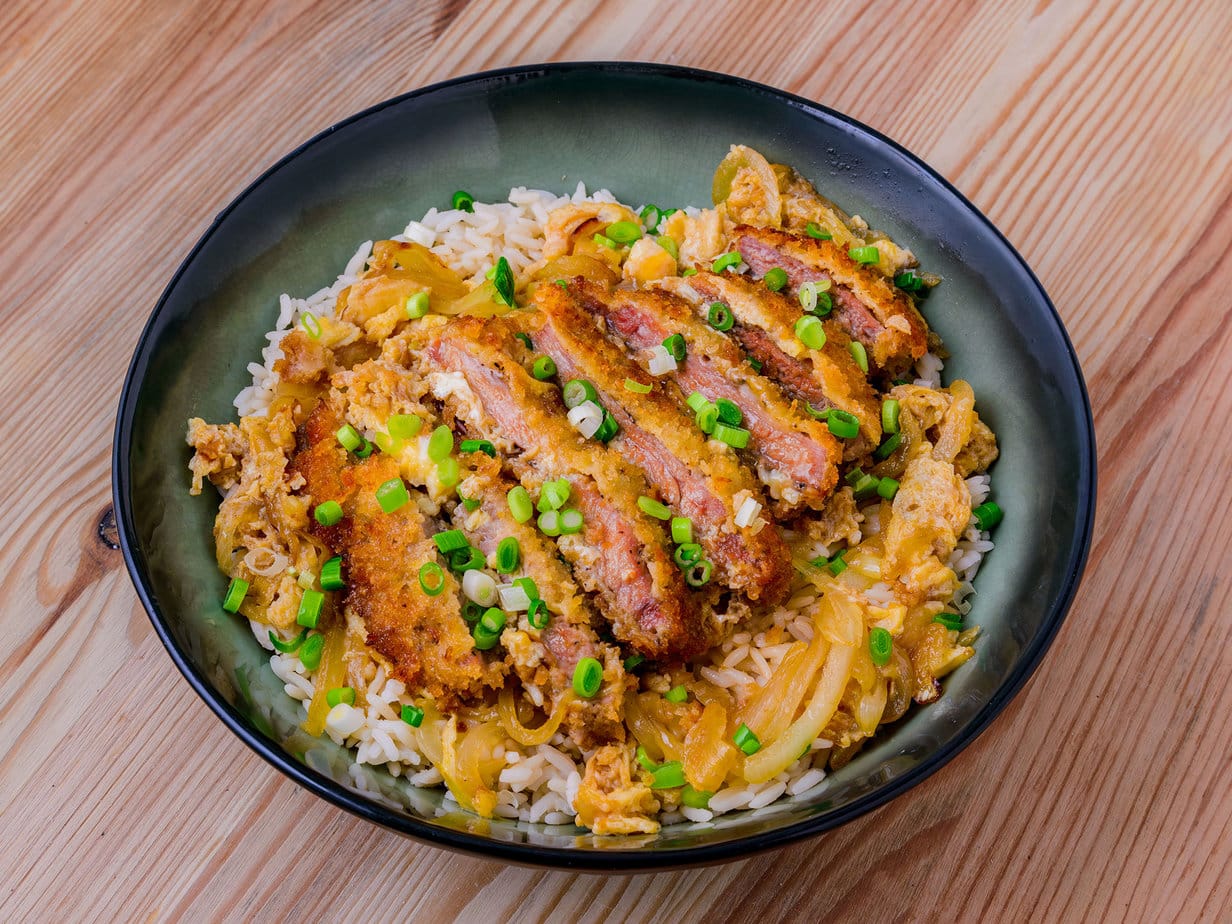
What is Donburi?
In Japanese, “donburi”, sometimes abbreviated as “don”, first refers to a large bowl. Just the container, therefore. Sometimes, it will be found under the name “donburi-mono”, meaning “thing in a bowl”. And that’s where it gets interesting!
Donburi, as a dish, consists of white rice, garnished with various meats, ranging from chicken to pork, including tempura, or even fish or fish eggs… It also includes vegetables and poached eggs, all simmered in a sauce, such as mirin or dashi.
Be careful not to confuse it with Takikomigohan, of which mame gohan is a good example. Here, the rice is cooked separately
There are several versions of recipes, based on the season, the region from which it originates, or the ingredients used. You can spot them thanks to the famous “don” suffix. There are of course some recipes that are more popular than others, such as butadon, katsudon, gyudon, oyakodon… However, it’s a dish that can be revisited in your own way. In Japan, these personal revisions even have a name; “pāsonaru-don”, or “personal-don” in English!
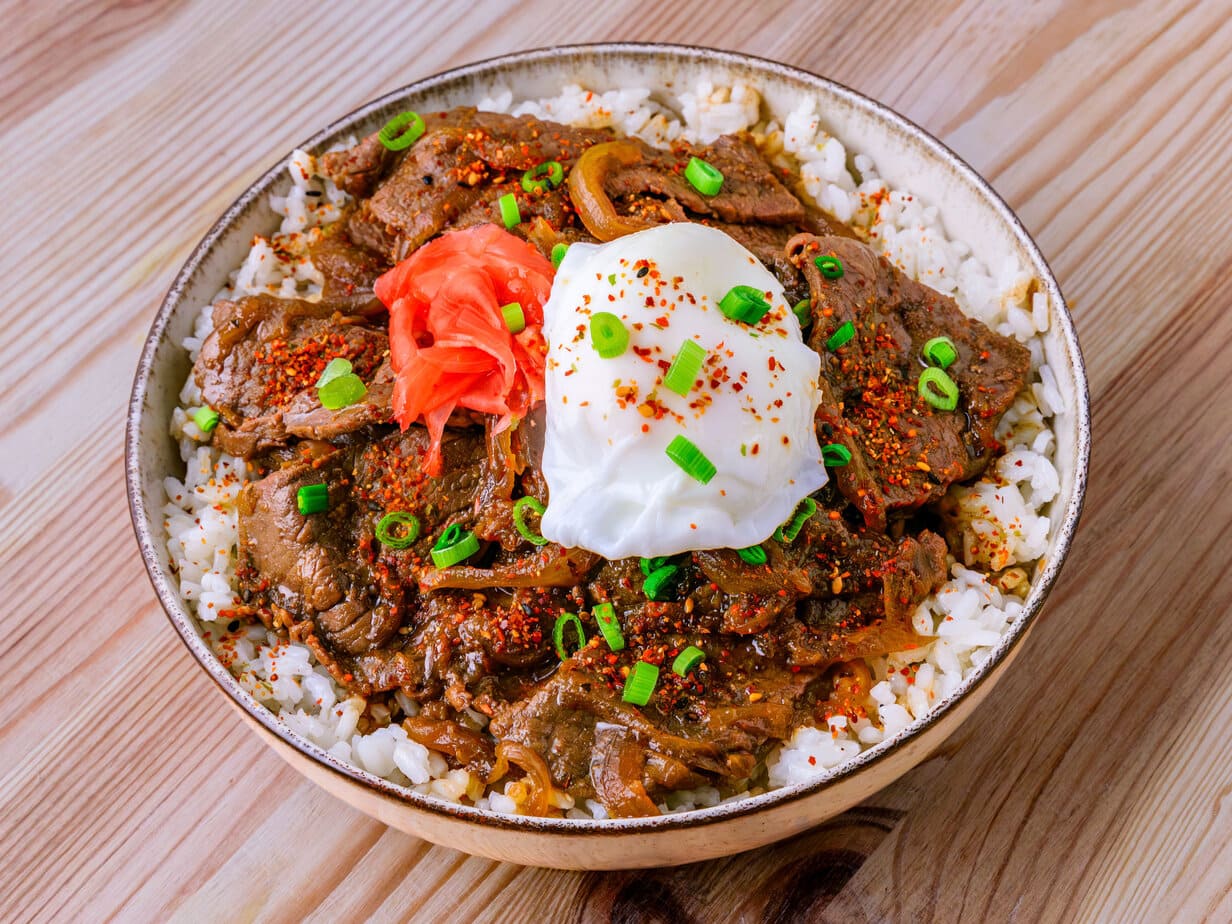
Fun fact: Since donburi is not a clearly defined concept, the All Japan Donburi Union
decreed that a Donburi bowl must have a radius of more than 15 centimeters, a height of five centimeters, and include a topping on the rice. Very technical, you might say. However, this is not an official and rigid rule. If the rice bowl is smaller without many toppings in it, it can still be considered a donburi. That’s what ultimately makes the dish so versatile!
Where Does Donburi Come From?
The origin of donburi dates back to the Muromachi period, which is dated from 1330 to 1570. “At the time, it was called ‘houhan’. I” t was a bowl of rice covered with vegetables and drizzled with broth. It did not yet contain meat at this stage.
The donburi of “that time was a vegetarian dish served in temples. It was a few centuries later, from 1603 (Edo period), that several restaurants specializing in it served a dish they would then call ‘donburi’. Being both a hearty, comforting, but above all inexpensive dish, donburi quickly became very popular in old Tokyo. Especially since i” t was quick to prepare and consume!
The donburi as we know it today is said to have emerged in the early 19th century. It was a bowl of rice, served with grilled eel and garnished with soy sauce (which is now called unadon). Over the years, ingredients and toppings have been diversified, which gives current donburi its uniqueness and richness.

How to Eat Donburi?
In most Japanese restaurants, donburi is served with a small miso soup and some condiments, such as nori, sesame seeds, pickled ginger, or shichimi togarashi.
The lid is left on the donburi, partly to keep the dish as warm as possible, but also to allow the ingredients to let their flavors mingle with each other. The Japanese traditionally eat donburi with chopsticks, but for some recipes, a soup spoon is not to be excluded.
Donburi and Bibimbap, What’s the Difference?
Although they are both enhanced rice bowl dishes, donburi and bibimbap are distinct. Firstly, bibimbap originates from Korea, while donburi comes from Japan. Additionally, the Korean version is served with gochujang, a fermented red chili paste, and lines the bottom of the bowl with a layer of cooked rice.

You might say that it also resembles a poke bowl. Not quite. The latter is originally a Hawaiian dish made with raw fish. It is served cold, whereas its Japanese counterpart is served hot.
What Are the Different Types of Donburi?
As I briefly mentioned, there are several types of donburi, some of which are more popular than others.
Parmi elles, on compte l’oyakodon, composé de poulet et d’oeufs et agrémenté de dashi, son cousin le tanindon aux oeufs et au boeuf, le tokashi butadon à base de porc grillé, le katsudon qui comprend une côtelette de porc Tonkatsu panée et frite, mais aussi le gyudon avec ses lamelles de boeuf, l’unagidon avec de l’anguille grillée, le kaisendon, consommé froid avec des sashimis, le tendon avec des tempuras, le magurodon avec son thon cru mariné et parsemé de nori, le soboro don à base de viande hachée,… À savoir que la liste est non exhaustive, il y en a pour tous les goûts.
Moreover, it’s a very simple dish to make at home. If you have leftover meat and some vegetables (onions, mushrooms, carrots…), all you’ll need to do is prepare the rice and choose the sauce that might allow you to create your personal-don
!
Among the essential sauces, you have a choice between soy sauce, mirin, and dashi if you want to stick to Japanese cuisine. Regarding the type of rice, japonica is the most used in donburi, as it is sticky and slightly sweet.
